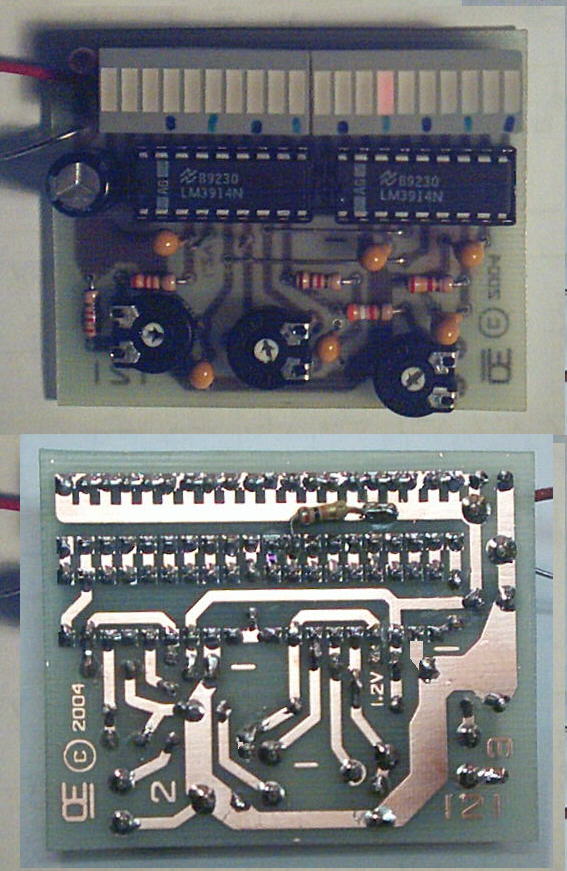
 Revised Schematic
NOTE: On Tantalum Caps, The Black line is Usually Positive.
Revised Schematic
NOTE: On Tantalum Caps, The Black line is Usually Positive.
 Circuit Board
A New and Better Image.
Circuit Board
A New and Better Image.
This is an Expanded Scale Voltmeter based on the National LM3914 chip. It is a 0.25 volt range between each LED.I specifically designed this unit for my spare battery in my RV Truck to continuously monitor its voltage. I did the orgional in a rush and have now changed a few values for ease of adjustment. Also added a few capacitors to corrected a few minor hum problems that affected some adjustments.
This Voltmeter it set for a range of: "10.25 to 15 volts".
The 20K resistor across the LED is required to null out the #10 LED. Leaving this resistor off will cause #10 to light Faintly when LED's above #10 are lit. This resistor is soldered to the copper side, due to space limitations!
Currently this unit is designed to operate from a 12 volt battery, over the range specified above. But it can be changed for Other Voltages and/or Ranges.
Breaking the trace between pin 9 and 11 on the top IC and connecting pin 9 to the supply rail will give a "Bar Display". "But as the bar length increases, SO DOES THE CURRENT, CONSIDERABLY".
PARTS AVAILABLE
I can supply the LED displays, listed in my parts area. Look at "LED's, Bar Displays"
They are $1.50 each plus postage. All the other parts are available also.
Postage cost on these parts depends on weight and where you live.
I can also supply the PCB for a Reasonable Price.
These prices are in US Funds.
"Back to My HOME Page"

Revised Schematic NOTE: On Tantalum Caps, The Black line is Usually Positive.
Circuit Board A New and Better Image.
All Imformation in this Article is "Copyright protected".
Chemelec
*Copyright © 2002 & 2006*